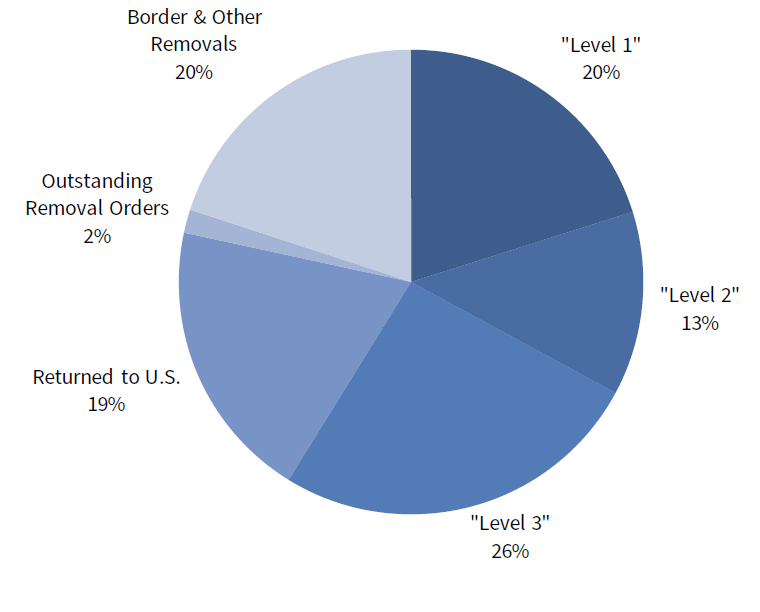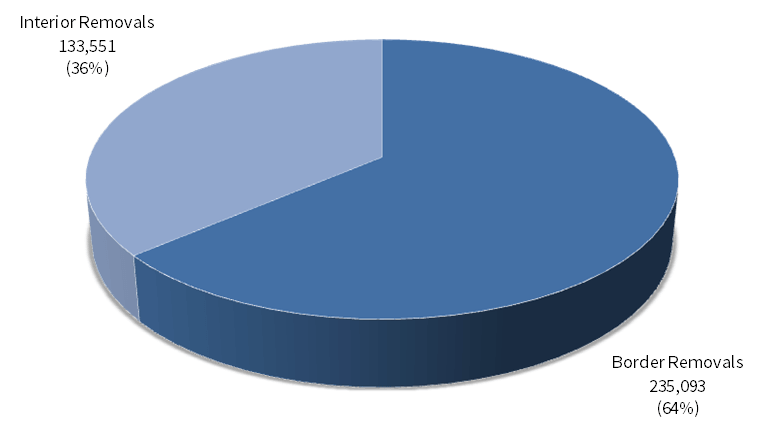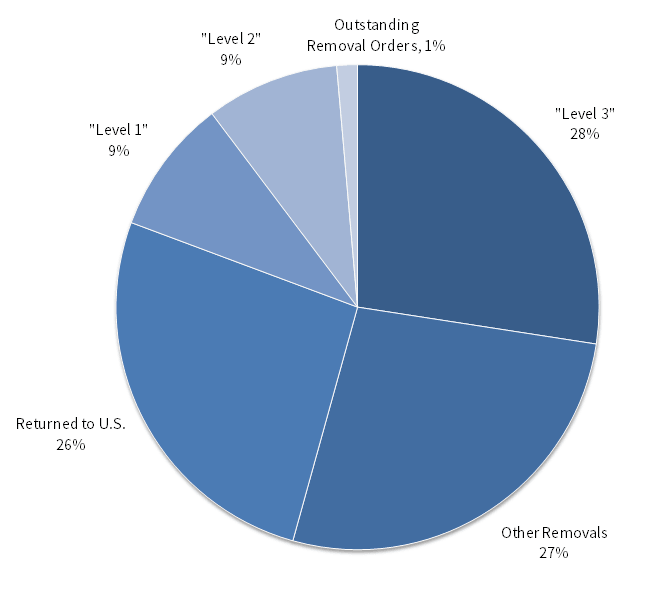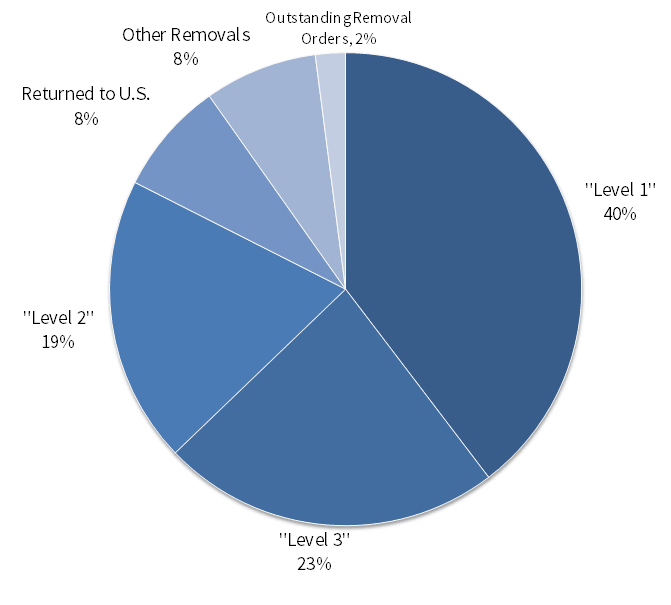No one can say with certainty when the Obama administration will reach the grim milestone of having deported two million people since the President took office in 2008. Regardless of the exact date this symbolic threshold is reached, however, it is important to keep in mind a much more important fact: most of the people being deported are not dangerous criminals. Despite claims by U.S. Immigration and Customs Enforcement (ICE) that it prioritizes the apprehension of terrorists, violent criminals, and gang members, the agency’s own deportation statistics do not bear this out. Rather, most of the individuals being swept up by ICE and dropped into the U.S. deportation machine committed relatively minor, non-violent crimes or have no criminal histories at all. Ironically, many of the immigrants being deported would likely have been able to remain in the country had the immigration reform legislation favored by the administration become law.
ICE’s skewed priorities are apparent from the agency’s most recent deportation statistics, which cover Fiscal Year (FY) 2013. However, it takes a little digging to discern exactly what those statistics mean. The ICE report containing these numbers is filled with ominous yet cryptic references to “convicted criminals” who are “Level 1,” “Level 2,” or “Level 3” in terms of their priority. But when those terms are dissected and analyzed, it quickly becomes apparent that most of these “criminal aliens” are not exactly the “worst of the worst.”
The agency defines three “priorities for the apprehension, detention, and removal of aliens”:
- Priority 1 – “Aliens who pose a danger to national security or a risk to public safety.”
- Priority 2 – “Recent illegal entrants.”
- Priority 3 – “Aliens who are fugitives or otherwise obstruct immigration controls.”
Priority 1 includes certain immigrants without criminal convictions whom ICE believes threaten national security or public safety. In addition, priority 1 encompasses three “levels” of criminal convictions, many of which are not violent or threatening”:
- “Level 1” – convicted of an “aggravated felony,” or two or more felonies.
- “Level 2” – convicted of a felony, or three or more misdemeanors.
- “Level 3” – convicted of no more than two misdemeanors.
A felony is a crime punishable by more than one year in prison. Felonies encompass crimes ranging from murder and arson to robbery and burglary. A misdemeanor is a crime punishable by more than five days but not more than one year in prison. Misdemeanors include disturbing the peace, some drunk driving offenses, and some traffic violations. The term “aggravated felony,” which certainly sounds dangerous, was invented by Congress solely for immigration purposes and need not refer to an offense that is “aggravated” or a “felony.” As initially enacted in 1988, the term referred only to murder, federal drug trafficking, and illicit trafficking of certain firearms and destructive devices. Congress has since expanded the definition of “aggravated felony” on numerous occasions and it now covers more than 30 types of offenses, including theft, filing a false tax return, and failing to appear in court.
All of which serves to illustrate the point that even the highest-priority immigrants on ICE’s list are not necessarily violent or dangerous. But even if we overlook this fact for the sake of argument, last year’s deportation statistics make clear that even “Level 1” deportees make up a minority of the immigrants whom ICE removed from the country. This does not represent an effective crime-fighting policy or an effective immigration policy. It is a misallocation of enforcement resources that is being used to create a humanitarian catastrophe as people who are a threat to no one are torn from their families, their communities, and their jobs.
Four-fifths of all deportations did not fall within ICE’s definition of a “Level 1” priority.
- In FY 2013, ICE carried out 368,644 “removals” of immigrants from the United States.
- One-in-five of these deportees qualified as “Level 1” as defined by ICE: immigrants convicted of an “aggravated felony” or at least two felonies (Figure 1).
- One-in-eight deportees fit the definition of “Level 2” (immigrants convicted of a felony or three misdemeanors), while just over one-quarter were “Level 3” (convicted of no more than two misdemeanors) (Figure 1).
- Just under one-in-five of those deported had been previously removed from the United States. Another one-in-five were removed for some other, non-criminal immigration violation. And two percent were immigrants with outstanding removal orders (Figure 1).
Figure 1: All Removals, FY 2013

Most removals involved immigrants apprehended near the border.
- ICE states that roughly one-third of deportees in FY 2013 were apprehended in the interior of the country, while nearly two-thirds were apprehended in the proximity of the border (Figure 2).
- However, the ICE distinction between “border removals” and “interior removals” is not as clear-cut as it sounds.
- ICE states that its border removal statistics refer to “recent illegal entrants,” defined as individuals “apprehended while attempting to illicitly enter the United States.”
- However, the border removal statistics appear to include all removals of individuals taken into custody by Customs and Border Protection (CBP) officers. CBP does not exclusively arrest individuals in the process of crossing the border. CBP’s Border Patrol agents also conduct roving patrols “near” the border, as well as operate checkpoints on roads which lead away from the border.
- Furthermore, ICE has suggested that the term “recent border crossers” includes, among others, those who entered the United States within the last three years.
- As a result, “border removals” may include immigrants who live and work in communities quite some distance from the border itself, rather than individuals attempting to enter the United States.
Figure 2: Interior vs. Border Removals, FY 2013

Fewer than one-in-ten deportees apprehended near the border fell within ICE’s definition of a “Level 1” priority.
- Only 9 percent of “border deportees” qualified as “Level 1” as defined by ICE: immigrants convicted of an “aggravated felony” or at least two felonies (Figure 3).
- Fewer than one-in-ten border deportees fit the definition of “Level 2” (immigrants convicted of a felony or three misdemeanors), while more than one-quarter were “Level 3” (convicted of no more than two misdemeanors) (Figure 3).
- More than one-quarter of border deportees had returned to the United States after being removed. And more than one-quarter were removed for some other, non-criminal immigration violation. One percent were immigrants with outstanding removal orders {Figure 3}.
- Being apprehended near the border and formally “removed” is not the same as voluntary return. An immigrant subject to “removal” may face criminal prosecution and prison time if he or she returns to the United States.
Figure 3: Border Removals, FY 2013

Three-fifths of deportees apprehended in the interior of the country didn’t fall within ICE’s definition of a “Level 1” priority.
- Two-in-five “interior deportees” qualified as “Level 1” as defined by ICE: immigrants convicted of an “aggravated felony” or at least two felonies (Figure 4).
- Fewer than one-in-five interior deportees fit the definition of “Level 2” (immigrants convicted of a felony or three misdemeanors), while just under one-quarter were “Level 3” (convicted of no more than two misdemeanors) (Figure 4).
- Eight percent of interior deportees had returned to the United States after being removed. Another eight percent were removed for some other, non-criminal immigration violation. And two percent were immigrants with outstanding removal orders (Figure 4).
Figure 4: Interior Removals, FY 2013

Only Scratching the Surface
As ICE’s own statistics make clear, the agency is involved primarily in the apprehension and deportation of people who have committed immigration violations and minor crimes—not terrorist operatives or violent criminals. But recognizing this is only the first step in understanding the way ICE functions. The next step is to examine how ICE carries out deportations. For instance, in FY 2013, 101,000 (or 27 percent) of the people whom ICE deported were summarily removed from the country via an “order of expedited removal,” and 159,624 (43 percent) were removed through a “reinstated final order of removal,” neither of which generally affords the deportee a hearing in court. In other words, seven out of every ten deportees in FY 2013 never had the opportunity to plead their cases before an immigration judge. Not only is ICE deporting people who aren’t a threat, but it’s deporting many of them in ways that don’t respect the full range of legal rights which form the basis of the U.S. criminal justice system.



